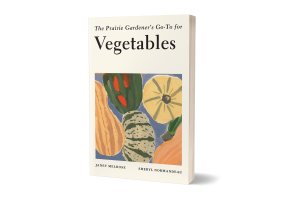Why are my beets so small?
Beet seed is pretty cool: Most cultivars are a multigerm type, which means that each little lump you hold in your hand is actually a fruit containing multiple small seeds (usually between two and five). You can’t separate them before planting, so you throw the whole thing in the ground as one “seed.” (Another common veggie that has multigerm seed is Swiss chard.) Of course, this means that when the seed germinates, the seedlings are all way too close to one another. Thinning the plants when they have gained two sets of true leaves or are about 3 inches (7.5 centimetres) tall will give each plant the space it needs. Pulling the thinnings up will only dislodge the roots of the keepers, so use a pair of long-bladed scissors to cut each unwanted plant at its base. (Don’t forget to save the ones you clip and throw them in a salad!) Leave at least 3 inches (7.5 centimetres) of space between plants. This will help the roots plump up nicely for a later harvest.
Another thing to watch for is a high nitrogen content in your soil. This will cause beets to grow beautiful leafy tops, but will fail to produce much underground. If you use compost in your beet bed, make sure it is well aged.
Maintain a regular watering schedule when growing beets, as this will also help root development. Water consistently, and do not allow the plants to become too dry between waterings.
Finally, the cultivars you choose to plant can make a difference! There are beets grown specifically for their tops, not the roots. These include ‘Merlin’, ‘Fresh Start’, and ‘Fresh Pak’. If you’re looking to make borscht, don’t select those. Other beets may have slender cylindrical roots instead of large globular ones.

Shop Local | Chapters Indigo | Amazon
Excerpted from The Prairie Gardener’s Go-To for Vegetables by Janet Melrose and Sheryl Normandeau. Copyright © 2020 by Janet Melrose and Sheryl Normandeau.

